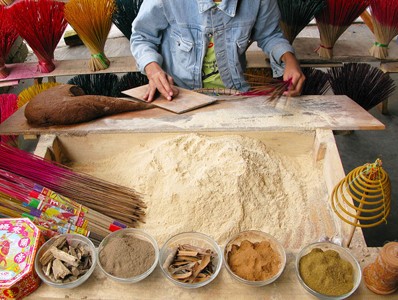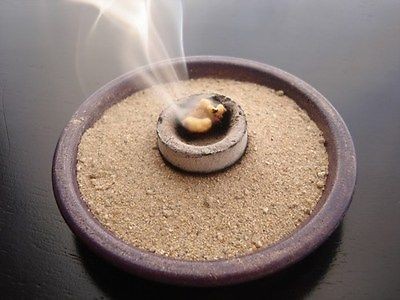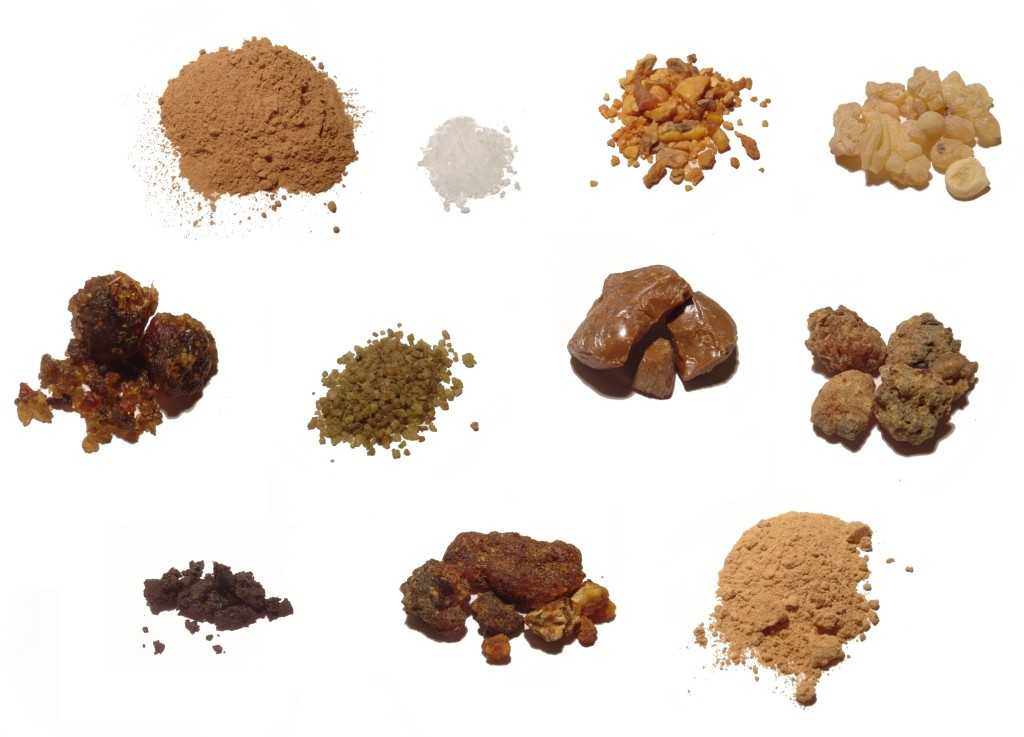How is incense made? In ancient times, the people who made composite incense were those who possessed the appropriate...
Incense: What it is and how to use it
The term incense is the past participle of the verb INCENDERE, which means "to set on fire". Used as an adjective, it has the meaning of "ignited, set on fire, inflamed," from the Latin eccl. incensum, p. pass. neuter noun of incendere "to set on fire.
This gives us an understanding of the literal meaning of the word.
In the last century, and sometimes still today, it was used as a synonym for the term Olibanus, the meaning of which must be sought in the origin of the word: from medieval Latin olibanus, from Gr. líbanos 'frankincense', but which more correctly comes from the Greek O-LIBANOS, which corresponds to the Arabic form AL-LUBAN (the MILK, in reference to the white color of the secretion of the newly cut plants) (Heb. LEBÔNÂH literally 'frankincense'), that is, frankincense, by the cohesion of the article with the noun.
This is an attempt to shed some light on the etymology of the terms and their usage, since the term frankincense itself can refer, depending on the context, either to a substance that produces a fragrance when burned, or to the resin obtained from plants of the Boswellie family (sacra, carterii, serrata, papyrifera, etc.). Confusion often results from this possibility of use, since any substance can be generically referred to as "incense". It is therefore a good idea to always try to accompany the common name with the name of the plant or plant family from which the substance (be it a resin, root, wood, or other) is derived.
We can try to divide the types of incense into a table, using the type of incense as a criterion. This classification is not unique and is for illustrative purposes only:
| Type |
Resins |
Woods |
Leafs/grass |
Seeds/bacche |
Roots |
Minerals |
|
|
Myrrh |
Sandal |
Mugwort |
Abelmosk |
Galangal |
Sulfur |
|
|
Mastic gum |
Fir wood |
Rosemary |
Juniper berries |
Gezian |
Salnitro |
|
Benzoin |
Pine wood |
Sage |
Cardamom |
Assafetida |
Charcoal |
|
|
|
Pine resin |
|
Pine buds |
|
|
|
We can see how each type corresponds to different types of incense, and how sometimes the same plant can have multiple classifications. In the table above we can see this with Pine, of which almost all parts (resin, wood, buds) can be used. Which part of the plant to use makes a big difference; in fact, beyond the obvious difference in type, there are a number of considerations that can be made to help us understand why we might want to use a wood rather than a resin. We will explore this topic in more detail in a future article.
By now it should be clearer what is meant by incense, we need to understand how it is used and what the purposes of using incense are.
Let us begin with the latter. Since ancient times, it has been natural for people to instinctively associate the use of aromatic substances with rituals, prayers, and all those practices that have spiritual significance.
How is incense used? Traditionally, ingredients were chopped, reduced to powder, and then mixed in specific proportions. The resulting compounds were burned in braziers containing burning charcoal on which a saucer was placed, which became incandescent; alternatively, it was burned directly over the coals or fire.
Today, charcoal for burning incense is available in herbal and specialty stores. The charcoal should be placed in a suitable container, such as an incense burner or censer; ordinary glass bowls or ashtrays should be avoided, as the high temperature of the charcoal can cause them to break.





Leave a comment